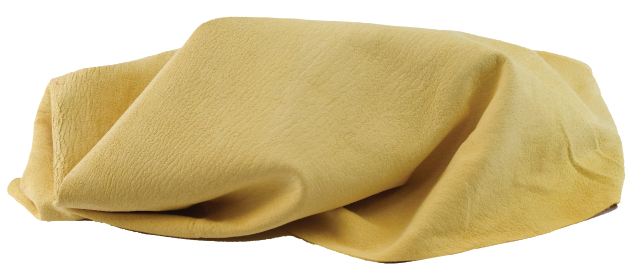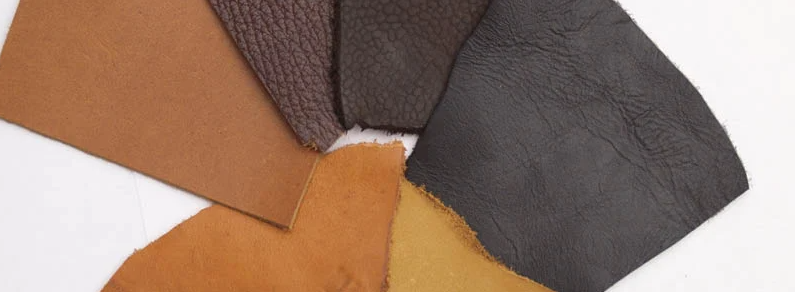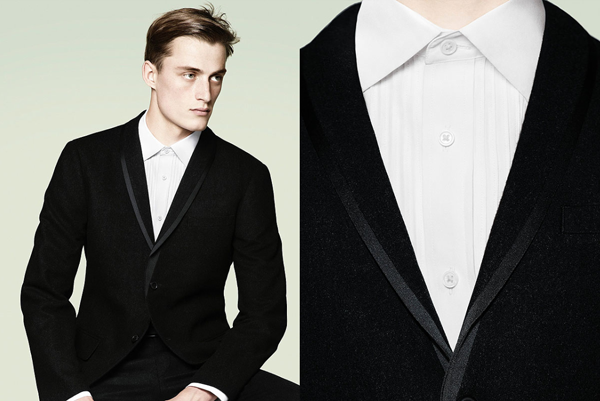Note by Nicolas: Romain has done us the honor of writing a series of articles on first-rate leather. He even consulted leather experts to make sure that every little piece of information is exactly correct. It’s complete, pedagogic, well-written; and believe me, it’s content that will go down in the history of Kinowear!
The use of leather goes right back to the origins of humanity: it was the first material that men used as clothing. But from Ancient Egypt onwards, leather became a noble and prized material. And this is still the case today: whether it be in the big ready-to-wear stores or the biggest luxury designers such as Hermès, items of clothing or accessories in leather are often the most beautiful, prized and…Expensive.
Quality of leather…
However, as you can imagine, and as is the case everywhere, the quality of leather varies, and price isn’t always a good indicator of the quality in question.
How can we make things clearer? What kind of leathers can be found and how can we learn to recognize them? How can we ‘measure’ the quality of leather? What cut should be chosen and for which use?
It’s out of the question that I pretend to have this down to a perfect science…but thanks to the experts who explained things to me, you’ll find some parts of answers to the questions you want to ask about leather. Thank you to Patrick from créa-cuir.com and to all those, who wish to remain anonymous; from the big luxury fashion houses who were all kind enough to offer me some of their time and knowledge.
How is this Leather File organized? Firstly, in good old Kinowear spirit, we’re going to start with the basics: the different kind of leathers and tannings that exist. Next, we’ll be getting to the heart of the matter: how to recognize good leather, some advice to help you out doing so. Finally, we’ll end with a little guide to the cuts that can be found regularly to help you make your choice.
The Basics: the types of leather and the individual stages involved from carving to fabrication.
Far from creating an accumulation of boring terminology, the aim is, as usual to convey the minimum amount of information necessary to be able to make your choices being ‘in the know’
Families of leather
There are as many leathers as there are animals with a skin, from the ostrich to the eel. Without listing them all, here are the main families:
Hairy animals
(Right, so it’s a bit of a simple title but the scientific terms really aren’t much fun!)
- Lamb: the superstar of leather. Often very soft and supple, it’s a fine skin with an almost silky appearance, often used for making clothing and some accessories such as men’s gloves.
- Calf: like the lamb, it is supple but more resistant. A bit rougher than his little friend, calf’s leather is used a lot for accessories (shoes, wallets, bags…)
- Sheep: it can be worked on while still keeping the wool intact , which creates a really warm material, which is then turned inside-out i.e the clothing is made with the wool on the inside and the skin on the outside. When there’s just the skin, it can be used in a similar way to the lamb: the skin is fine but very resistant.

The incredible aviator jacket by Burberry Prorsum which is now worth a fortune
- Goat: it’s a resistant leather that’s really often used to make robust bags or accessories. We’re starting to see it in ready-to-wear stores because it’s very supple thanks to it being really fine.
- Young bovine: it’s the leather of an adult bovine (cow, bull…) It is therefore more rigid and solid than calf’s leather, but equally less silky to the touch.
- Buffalo: in perfect accordance with the image that we might have of the animal, its leather is rigid and very robust. It’s often used for furniture or in textiles for jackets but it isn’t a material that allows you to work on a shape that’ll be close to the body.
- Chamois, buck and antelope: Chamois is a prized material when it comes to shoes and jackets and is often really soft to the touch. On the other hand, antelope is barely used because it’s very difficult to work with. A little detail: even if it still plays a role in the materials used by a lot of sellers, deer/buck is a protected species now and therefore no longer used.

chamois leather
- Crocodiles: In order of increasing frequency of use, gavial, crocodile and alligator are without a doubt the most noble and expensive materials. They’re solid and each item has a unique character caused by the irregularity of the scales. It’s usually the stomach that’s used for its suppleness.

- Snakes. Anaconda, cobra and especially python are rare and highly-sought material. Mainly used for leather goods even if it can be found in ready-to-wear stores (Lanvin, SS13, or every now and then at Robert Cavalli).

I damn the use of python for such an abomination!
- Fish. Yes, yes, it’s true! Fish leathers appear essentially on smaller leather goods: eel, salmon, shark…

Shark leather
Before bringing this review of the different families of leather to a close, it seems necessary to look at a less glamorous aspect of leather: its origins. The python doesn’t exist other than in the wild and has to be hunted, the gavial is threatened by extinction, and conditions of raising the animal aren’t always fantastic… These rare and sought-after materials imply a commerce that is more or less respectful of the well-being of the animal.
French, Italian or Spanish origins guarantee that the animals haven’t been subjected to treatment that’s (too) violent, but you should know that lower-end leathers often come from Bangladesh or India and there…I’ll spare you the details! (note by Benoît: that’s why I encourage you not to buy a low-end leather jacket! Fur advocates are to be found in huge numbers, but the tanning of low-end leather is a real plague too for the people working on it. And that’s without mentioning the pollution of water.)
Working the leather
There are several steps that need to be completed in order to finish working on the skin…because it isn’t leather just because it’s been cut up!
There will be some terms that you’ll see time and time again on labels or when speaking with the seller, and this is even without getting into the different kinds of finishes. We talk about full-grain when we keep all the layers of skin, top-grain when we keep only the top layer, and finally split leather when the toughest – but also ugliest – inner layers of skin are kept.
Once stripped, the skin of the animal is treated with salt to remove water…but it is still skin.
The preparatory stages consist of washing the skin in several different ways: every last scrap of fur, fat and residue has to be removed.
Tanning is the process that will ‘freeze’ the life of the skin and thereby turn it into a material that won’t putrefy as well as one that is supple. The process entails soaking the skin in different substances: tannin. There are two kinds. Mineral tanning or chemical tanning can be carried out using different ingredients such as aluminium, alum or chromium salts: efficient and fairly cheap, these treatments can, on the other hand, prove toxic.
Natural tanning is a longer and more expensive process but at the same time much less harmful. It is also interesting on excellent quality skins such as those used by Hermès because the finished look is more natural (note by Benoît: this process allows the leather to ages really beautifully). Retanning allows finishing touches to be made to the skin when it comes to the feel.
From this moment on, we have a real, almost ready-to-use leather! The ultimate step before making an item of clothing: the finishes! This is where the skin is given its color, its look and texture, its flexibility…An essential to remember: the fewer treatments are use, the more beautiful the skin is in itself. Here are the main varieties:
Aniline/dipped leather: reserved for the most beautiful full-grain skins without imperfections, this treatment involved dipping the leather into a bath to dye it whole. There’s no protection to conserve the initial characteristics of the skin…This leather is definitely the softest but also the most fragile and often the most expensive: the slightest drop of water can become…Dangerous.

An example of aniline lamb’s leather. The pockets show that the leather is starting to age: even if some creases become increasingly marked, the leather gains in character and becomes more and more beautiful as it ages.
Corrected grain or semi-aniline leather: with some natural imperfections, the top layer is sanded down to remove them. The material is therefore a bit less beautiful than an aniline leather. It is then dyed before being covered in a translucent layer.
Grainy or wet-look leather: when the grain of the leather is regular, this treatment accentuates it. The grain is in fact caused to swell by vapor for a much more textured effect that shows off bright colors such as red and blue…
Finally, pigmented leather receives one or more layers of opaque color that covers imperfections and renders the leather more resistant. It is more consistent and easier to make waterproof…but less authentic and often has a glazed appearance. The skins that are treated in this way are of inferior quality, unless the idea is to give the leather a really shiny look.

This is a pigmented and slightly grainy young cow’s leather: you can see that the grain is regular. It is very shiny because it has had to be treated several times, but that said, I’ve put it through many hailstorms and it is still really beautiful.
The patina refers to the way that the leather ages. Usually aniline or dipped leathers age the best: the skin becomes less uniform, creases appear and even the color can be accentuated or become lighter depending on the wear…In short, the patina bears witness to the life of the leather and can even add value thinking about vintage leathers. You should know that the patina will usually be more marked on a brown or light leather than on a black one.
Velvet leather. They’ve got a feel that’s kind of…velvety! For this king of finish, the skin has to be really beautiful right from the beginning: imperfections cannot be corrected through tanning.
- Suedes: the inside layer of the skin is sanded making it feel like a peach to the touch. On the other hand, this leather shows even the slightest little mark and maintenance can be extremely expensive…(article on the maintenance of leather here LINK)

Opening Ceremony has often used this leather for its desert boots
-

This is a suede calf’s leather and you can see by the pores that it’s very fine and at the same time keeps its velvety look.
- Nubuck leather: often has the same look as suede leather. The only difference is that the technique of the nubuck implies a slight sanding of the grain i.e. the outer layer of the skin.
- Wooly skins bypass the majority of these steps of tanning, Retanning and finishing because the aim is to conserve the fur of the animal on the inside of the item of clothing, apart from some rare examples that are given a coating for a polished look. These leathers are really warm, have a velvety touch but are less fragile than the velvet leather themselves. This skin has lots of advantages!


Sheepskin leather…the finger trace gives you an idea of how silky it is…
Now you have all of the basic vocab you need to talk about leather! The next step? A few simple tips for judging the quality of a skin! And we’ll cover in a post to be published soon.

Are you more black or brown leather ? Do you wear a leather jacket often ? Reply in the comments.



Are you more black or brown leather ? Do you wear a leather jacket often ? Reply in the comments.
Black goes with everything – brown only goes with brown and yellow… I’ll stick with black
Black leather is going well with a lot of stuff… But in general black is a sad color and it isn’t that easy to wear. A post is coming on that topic!
On the other hand, imo, brown really goes with everything, blue, gray, beige, kaki, burgundy all possible hues of earthy tones…
I’m just saying… 😀
Cool guide Nicolas, here is also a cool video about the Italian leather tanning process that’s super in depth: http://www.youtube.com/watch?v=5k6LTKG9E6c
Thanks a lot Terry 🙂
Edit : if there are any readers in search for an ecommerce podcast, Terry’s website is go-to destination: http://www.buildmyonlinestore.com/about/